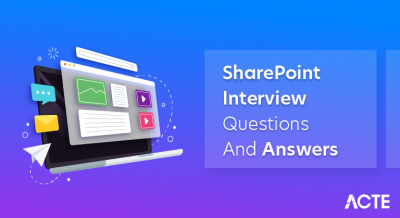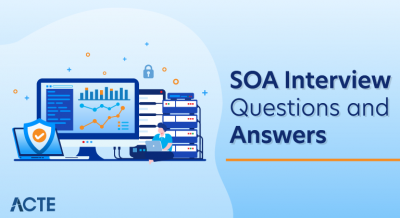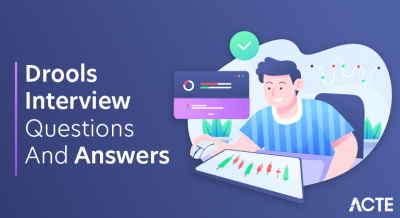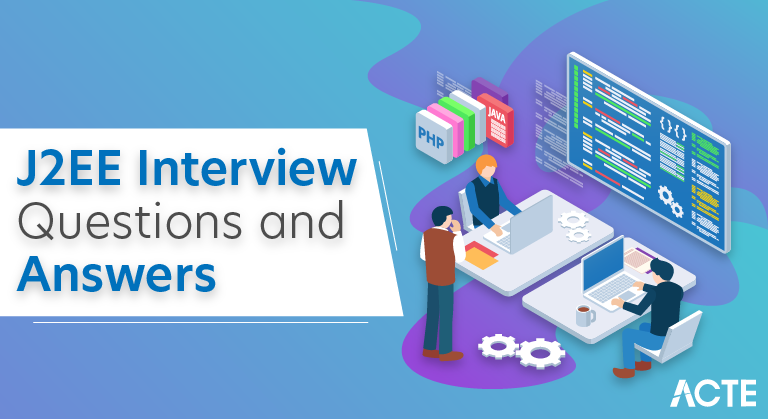
Java 2 Platform, Enterprise Edition, or J2EE, is an application suite designed for Java that is geared towards enterprise use. It consists of servlets, Java Message Service (JMS), JavaServer Pages (JSP), Enterprise Java Beans (EJB), and more. It facilitates the development of safe, scalable, and distributed software. J2EE provides a robust framework that enables the seamless integration of various components in multitiered applications. Its specifications ensure portability and interoperability across different systems. Programmers can generally use Java to create complex, enterprise-level applications thanks to J2EE.
1. What is the Enterprise Edition (J2EE) of the Java 2 Platform?
Ans:
Large-scale, distributed enterprise Java applications could be constructed using a set of specifications and technologies known as the Java 2 Platform, Enterprise Edition. But it has changed over time, and as of January 2022, when I wrote my last update, it is now more correctly called Java EE or Jakarta EE. Consult official sources or documentation for the most recent information.
2. What are the J2EE platform’s primary advantages?
Ans:
The J2EE (Jakarta EE) platform offers several benefits, such as security, scalability, portability, enterprise integration support, component-based development, transaction management, multitier architecture, and conformity to open standards. The platform’s capacity to create reliable and scalable enterprise applications is enhanced by these features.
3. Is there compatibility between the J2EE platform and other WS-I implementations?
Ans:
- Java EE took the place of J2EE and developed into Jakarta EE.
- Java EE has traditionally taken into account the WS-I (Web Services.
- Interoperability) guidelines for web services interoperability.
4. Which technologies are part of the Java 2E Framework?
Ans:
Java EE (Enterprise Edition): Set of specifications for enterprise features in Java.
Spring Framework: Comprehensive framework for Java development, providing features like dependency injection and aspect-oriented programming.
Hibernate: Object-relational mapping (ORM) framework for Java, facilitating the mapping of object-oriented models to relational databases.
5. What has the J2EE 1.4 platform added?
Ans:
Improved web services support with JAX-RPC, JCA 1.5 for enterprise system integration, JMS 1.1 for messaging, JAXR for XML registry interaction, JACC for standardised security policies, and enhancements to the EJB specification are just a few of the major features that J2EE 1.4, an evolution of J2EE 1.3, introduced. It also signalled the release of JavaServer Faces (JSF), a tool for developing web applications.
6. What is the J2EE 1.4 SDK?
Ans:
The J2EE 1.4 SDK (Java 2 Platform, Enterprise Edition) was a set of tools and APIs for building enterprise-level Java applications. It included components like Servlets, JSP, EJB, JMS, and more for developing distributed and scalable systems. Note that information might have changed since my last update in January 2022.
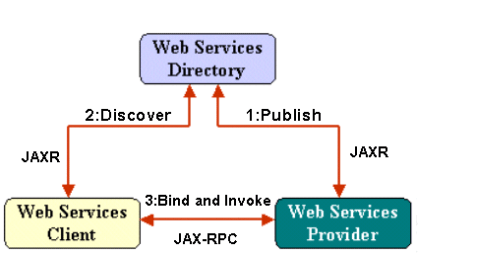
7. Which platform version, 1.4 or 1.3, should I use right now??
Ans:
Most recent Features: Updates frequently include new features, enhancements, and bug fixes. Version 1.4 could be a wise option if it adds features that are essential to your project.
Community Support: The community is more likely to pay attention to the most recent version. You could find better support for the most recent release if you run into problems or have questions.
8. Can J2EE v1.3 applications run on a J2EE v1.4 implementation?
Ans:
Yes, J2EE v1.3 applications can generally run on a J2EE v1.4 implementation due to backward compatibility. However, it’s advisable to check for any specific considerations in the documentation of your application server.
9. What is the relationship between the Sun Java Enterprise System and the J2EE architecture?
Ans:
A collection of guidelines for creating Java applications at the corporate level is called Java 2 Platform, corporate Edition. Developed on the J2EE platform, Sun Microsystems’ Sun Java corporate System (Java ES) was a set of middleware services that offered integrated components for the creation of corporate applications.
10. Is it possible to obtain the Sun Java System Application Server source code?
Ans:
Yes, the source code for Sun Java System Application Server, now known as Oracle GlassFish Server, is available. You can find it on the official GlassFish website or on GitHub as it is an open-source project. Verify the latest information from official sources for any updates or changes.
11. Which tools are available for creating J2EE applications?
Ans:
IDEs: Eclipse
- IntelliJ IDEA
- NetBeans
Build Tools: Apache Maven
- Gradle
- Application Servers:Apache Tomcat
- WildFly (JBoss)
- GlassFish
12. Why is the J2EE platform needed?
Ans:
The Java 2 Platform, Enterprise Edition (J2EE), now known as Java EE, is essential for building large-scale enterprise applications. It offers a standardized platform with features like component-based development, distributed computing, security, transaction management, and connectivity. J2EE ensures scalability, performance, and interoperability, providing a robust environment for developing and deploying mission-critical Java applications.
13. What does Sun mean when it refers to “Free” platform use?
Ans:
- “Free” in Sun Microsystems’ context means no licensing fee for platform use.
- Implies open-source distribution.
- The program is available for free use, modification, and distribution.
- Specific license terms govern usage and distribution.
14. Is technical support “Free” as well?
Ans:
The product or service will determine whether or not technical support is free. While basic support might be provided for free, more advanced or specialised help might have an expense. For more information, see the product or service you’re using’s specific support policies.
15. Are there compatibility tests for the J2EE platform?
Ans:
Platform Transition: Java EE (Enterprise Edition) has replaced Java 2 Platform, Enterprise Edition (J2EE), and Jakarta EE is the new platform.
Compatibility testing is necessary to make sure that the Jakarta EE or Java EE specifications are being followed.
Technology Compatibility Kit (TCK): In order for an implementation to be deemed compatible with the specifications, it must successfully complete a series of test cases included in the TCK.
16. What distinguishes someone who is J2EE compatible from someone who is a licensee?
Ans:
| Criteria | J2EE Compatibility | Licensee | |
| Definition |
Adheres to J2EE standards and specs |
Entity or individual with legal right to use. | |
| Role | Software application or server | Entity or individual holding the license. | |
| Focus | Technical adherence | Legal permission. |
17. What’s the link between J2EE SDK and Apache Tomcat?
Ans:
Apache Tomcat is a servlet container that supports the Java Servlet and JavaServer Pages (JSP) protocols. It is commonly used in conjunction with Java 2 Platform, Enterprise Edition (J2EE, now Java EE) applications as a web server for hosting servlets and JSPs. While Tomcat is not a full Java EE application server, it serves as a lightweight option for web-based Java applications.
18. What distinguishes the Java EE 5 SDK from the J2EE SDK?
Ans:
Apache Tomcat is a servlet container that supports the Java Servlet and JavaServer Pages (JSP) protocols. It is commonly used in conjunction with Java 2 Platform, Enterprise Edition (J2EE, now Java EE) applications as a web server for hosting servlets and JSPs. While Tomcat is not a full Java EE application server, it serves as a lightweight option for web-based Java applications.
19. An EJB platform: what is it?
Ans:
An EJB (Enterprise JavaBeans) platform is part of Java EE, providing a component architecture for building scalable, distributed, and enterprise-level Java applications. It offers features like a component model, distributed computing, transaction management, security, and persistence. EJB components include Session Beans, Entity Beans, and Message-Driven Beans.
20. What is the API for JavaMail?
Ans:
Import Statements: Import necessary classes from the javax.mail and javax.mail.internet packages.
Mail Session Setup: Set up mail session properties using a Properties object. Configure SMTP host, port, and enable authentication.
Create Mail Session: Create a mail session using Session.getInstance with the defined properties.
Use an Authenticator to provide email credentials.
21. What is Java’s java.util.concurrent package used for?
Ans:
The Java java.util.concurrent package offers high-level concurrency utilities along with a framework for concurrent programming. Its synchronisation classes, thread pools, atomic variables, and other features make creating multithreaded applications easier.
22. Explain what J2EE is.
Ans:
The acronym for Java 2 Platform, Enterprise Edition is J2EE. It is a collection of guidelines, procedures, and technical tools for creating distributed, multi-tiered enterprise applications.
23. Describe the architecture of J2EE.
Ans:
The client tier, web tier, and enterprise tier are the three tiers on which the J2EE architecture is built. It offers several services, including messaging, transaction management, and security.
24. What is the difference between J2SE and J2EE?
Ans:
J2SE (Java 2 Platform, Standard Edition): Core Java platform for developing standalone applications.
J2EE (Java 2 Platform, Enterprise Edition): Extension of J2SE for building enterprise-level applications with features like EJB, JMS, JSP, and servlets.
25. What is a servlet?
Ans:
A servlet is a Java class used for server-side programming in web applications. It extends the capabilities of web servers by handling HTTP requests, processing form data, managing sessions, and enabling dynamic content generation. Servlets follow a lifecycle and are platform-independent, making them a key component in Java-based web development.
26. Explain the life cycle of a servlet.
Ans:
Servlet life cycle consists of initialization, service, and destruction phases. The init() method is called once during initialization, service() method is called to handle requests, and destroy() method is called before the servlet is removed.
27. How do you define a JSP?
Ans:
A technology called JavaServer Pages (JSP) is used to create dynamic web pages. By fusing HTML or XML markup with Java code, developers can incorporate dynamic content into static pages. The server transforms JSP pages into servlets, and servlets and JSP pages frequently work together to create interactive web applications.
28. Describe an EJB.
Ans:
Enterprise-Level Component Architecture: EJB is a Java-based component architecture designed for building enterprise-level applications.
Distributed Computing: EJB supports the development of distributed applications by allowing components to be distributed across multiple servers.
29. Explain the various EJB types.
Ans:
Session Beans
Purpose: Handle business logic for client requests.
Types: Stateless, Stateful, Singleton.
Entity Beans (Replaced by JPA Entities)
Purpose: Manage persistent data in a database.
Types: Container-Managed Persistence (CMP), Bean-Managed Persistence (BMP).
30. What is the difference between stateful and stateless session beans?
Ans:
Stateful Session Beans (SFSB): Maintain state for a specific client. Each client has its own instance.
Stateless Session Beans (SLSB): Do not maintain state between method calls. Instances are shared among clients.
31. What is JDBC?
Ans:
JDBC (Java Database Connectivity) is a Java API for interacting with relational databases. It provides a standard interface to connect Java applications to databases, execute SQL queries, and handle results. Key features include connection management, statement execution, result set handling, transaction management, error handling, and metadata access.
32. Explain the steps to connect to a database using JDBC.
Ans:
Load JDBC Driver: Use Class.forName(“com.mysql.jdbc.Driver”); (replace with your database driver).
Create Connection URL: Define a connection URL like jdbc:mysql://localhost:3306/mydatabase.
33. What is a transaction?
Ans:
A transaction is a set of operations treated as a single, indivisible unit of work in a database. It follows the ACID properties – Atomicity (all or nothing), Consistency (maintains data integrity), Isolation (independent execution), and Durability (permanent changes). Transactions ensure reliability and integrity in database operations, allowing for consistent and secure data handling.
34. Explain ACID properties in the context of transactions.
Ans:
Atomicity (A): Transactions are treated as indivisible units, ensuring all changes succeed or fail together.
Consistency (C): Transactions bring the database from one valid state to another, maintaining integrity.
Isolation (I): Transactions operate independently, preventing interference and ensuring serializability.
35. What is JMS?
Ans:
Java Message Service (JMS)Definition: Java-based messaging standard for asynchronous communication between applications.
MessageDefinition: Basic unit of communication in JMS, encapsulating data and additional information.
ProducerDefinition: Component or application that sends messages to a JMS destination.
36. Explain the difference between Point-to-Point and Publish/Subscribe messaging models.
Ans:
Point-to-Point (P2P) messaging is one-to-one communication using queues, akin to emails. It involves direct communication from a single sender to a specific receiver. Publish/Subscribe (Pub/Sub) messaging, in contrast, enables one-to-many communication through topics, suitable for scenarios with multiple interested subscribers, like real-time updates. P2P uses one message for one receiver, while Pub/Sub uses one message for multiple subscribers. The key distinction lies in the communication pattern and scalability between the two messaging models.
37. What is JAAS (Java Authentication and Authorization Service)?
Ans:
JAAS Definition: Java Authentication and Authorization Service.
Purpose: Provides a framework for building authentication and authorization into Java applications.
Authentication: Supports various mechanisms like username/password, Kerberos, and X.509 certificates.
38. How can you secure a web application in J2EE?
Ans:
Authentication: Use servlet container authentication or custom login modules.
Leverage J2EE security annotations like @RolesAllowed.
Authorization: Declare roles with @DeclareRoles and use role-based access control.
Implement programmatic security checks using isUserInRole().
39. What is the Singleton pattern?
Ans:
The Singleton pattern ensures a class has only one instance and provides global access to that instance throughout the application. It restricts instantiation to a single object, typically achieved through a private constructor and a static method to access the instance.
40. Explain the MVC (Model-View-Controller) design pattern.
Ans:
MVC separates an application into three interconnected components: the model (data and business logic), the view (presentation), and the controller (handles user input and updates the model and view).
41. Web services: what are they?
Ans:
Web services facilitate cross-application communication by using standard protocols like SOAP or REST to exchange data over the internet. They enable interoperability among diverse systems, allowing sharing and access to functionalities across platforms. Typically using XML or JSON, web services offer a standardized way for applications to interact and share information seamlessly.
42. Explain SOAP and REST.
Ans:
Web services use the SOAP (Simple Object Access Protocol) protocol to exchange structured data. The REST architectural style and common HTTP methods can be used to create a web service.
43. Explain JNDI.
Ans:
JNDI (Java Naming and Directory Interface) is a Java API facilitating access to naming and directory services like LDAP or DNS, allowing applications to retrieve objects using unique names in a platform-independent manner. It’s crucial in Java EE for accessing resources like databases or messaging services.
44. How do Java 2E apps work with JNDI applications?
Ans:
JNDI (Java Naming and Directory Interface) serves as a middleware that allows Java 2EE applications to discover and access resources stored in naming and directory services. It acts as a linkage enabling applications to locate resources like databases or messaging services in a standardized manner. Through JNDI, Java 2EE apps access these resources without hardcoding, promoting flexibility and interoperability within enterprise environments.
45. What is the difference between WAR, and JAR files?
Ans:
Java ARchive, or JAR: includes metadata, resources, and Java classes. used to package Java modules, standalone apps, and libraries.
Ideal for standard Java libraries and applications.
Web ARchive, or WAR: especially for online programmes. consists of HTML, CSS, JavaScript, servlets, JSPs, and configuration files, among other web components.
46. Explain the deployment descriptor in J2EE.
Ans:
Deployment descriptors in J2EE are XML files that hold configuration details for components like servlets or EJBs. They specify deployment settings, dependencies, security, and other properties necessary for the proper functioning of the component within the application server or container.
47. What is the Spring framework?
Ans:
Java Framework: For creating enterprise applications, Spring is an open-source Java framework.
It encourages Inversion of Control (IoC) by giving the Spring container control over the creation and lifecycle of objects.
Dependency Injection (DI): Spring improves modularity and maintainability by injecting dependencies into components.
48. An explanation of Spring’s dependency injection.
Ans:
Dependency Injection (DI) in Spring is an Inversion of Control (IoC) principle where the framework supplies a class’s dependencies. This promotes loose coupling, easier testing, and better maintainability. Dependencies are injected through constructors, setters, or methods, configured in XML, annotations, or Java-based configuration. It enhances code modularity and flexibility. Example: a Car class requiring an Engine is configured in Spring, which injects the Engine dependency during instantiation.
49. What does hibernation entail?
Ans:
Hibernation in animals involves a state of reduced metabolic activity, lowered body temperature, and dormancy to conserve energy during periods of scarcity. It’s a survival strategy, often occurring in winter. In computing, hibernation refers to a power-saving mode where a device saves its state to disk and shuts down, consuming minimal power.
50. Explain what a hibernation session is.
Ans:
As an interface between the application and the persistence layer, the session in Hibernate serves this purpose. For CRUD (Create, Read, Update, Delete) actions on entities, it offers methods.
51. What are some ways to enhance a J2EE application’s performance?
Ans:
Database Optimization: Optimize queries and use connection pooling.
Implement caching mechanisms to reduce database queries.
Session Management: Minimize session object usage.
Consider stateless session beans for appropriate scenarios.
52. In a web application, what does the web.xml file serve as?
Ans:
In a Java web application, the web.xml file serves as the deployment descriptor. It provides configuration information to the web container (e.g., Apache Tomcat) about the structure and behavior of the application. Key roles of web.xml include defining servlets, filters, listeners, error pages, security settings, and other parameters necessary for proper deployment and execution of the web application.
53. Explain how to use the annotation @EJB.
Ans:
Import Annotation: Import @EJB annotation.
Inject EJB: Annotate field with @EJB for injection.
Container Management: Java EE container manages EJB’s lifecycle.
54. What is the purpose of the finally block in Java?
Ans:
The finally block in Java is used for cleanup operations and resource release. It ensures that specified code executes regardless of whether an exception occurs in the associated try-catch block, helping to prevent resource leaks and guaranteeing certain operations.
55. What is the purpose of the throws clause in a method signature?
Ans:
The throws clause in a Java method signature declares the types of exceptions that the method might throw during execution. It provides information to calling code about potential exceptions, facilitates exception propagation up the call stack, and promotes transparent exception handling.
56. Explain the equals() and hashCode() methods.
Ans:
The equals() method compares the contents of two objects, and the hashCode() method returns a hash code value for an object.
57. What is the pattern of the Observer?
Ans:
The Observer pattern is a behavioural design pattern in which a subject (an object) keeps track of dependents (also called observers) who get alerts when the subject’s state changes.
58. What is the Java super keyword used for?
Ans:
The super keyword in Java is used for:
- Access members of the immediate parent class if there is a name conflict within the subclass.
- Specifically, invoke the superclass constructor within the subclass constructor.
- A method should always be called from the superclass when it is overridden in a subclass.
59. Describe Java’s transient keyword.
Ans:
The transient keyword in Java allows you to stop some instance variables from being serialized when converting an object to a byte stream. This can be used to exclude sensitive data or information that doesn’t need to be preserved. The initial values of temporary fields are set upon deserialization.
60. What does Java’s garbage collection mean?
Ans:
Java’s garbage collection is an automatic process that identifies and reclaims memory occupied by objects no longer in use. It prevents memory leaks by deallocating unreachable objects, eliminating the need for manual memory management. Garbage collection occurs automatically in the background, enhancing Java’s simplicity and reducing the risk of memory-related errors.
61. Describe the “try-with-resources” clause.
Ans:
The “try-with-resources” statement in Java simplifies resource management by automatically closing resources, like files or connections, when they are no longer needed. It eliminates the need for explicit finally blocks and ensures proper resource cleanup. Resources must implement the AutoCloseable or Closeable interface, and multiple resources can be managed in a single statement.
62. What is the Java volatile keyword used for?
Ans:
The volatile keyword in Java ensures that the value of a variable is immediately visible to other threads and prevents caching in local memory. It’s used for variables accessed by multiple threads without providing mutual exclusion or atomicity for compound operations.
63. Describe the Java object serialisation concept.
Ans:
The process of transforming an object’s state into a byte stream so that it can be quickly saved to a file or sent over a network is known as object serialisation.
64. What distinguishes Java’s equals() function from ==?
Ans:
- The equals() method compares the equality of content and values by possibly modifying the comparison logic according to how the class is implemented.
- Operator == determines whether two references point to the same memory location in order to check for reference equality.
65. Describe the Java reflection concept.
Ans:
A programme can examine and change its own structure while it is running thanks to Java reflection. It offers the ability to dynamically inspect classes, methods, and fields, making it possible to perform operations like working with annotations, generating instances, accessing private members, and invoking methods without needing to know the class structure at compile time.
66. What is the Java static keyword used for?
Ans:
In Java, variables, methods, and blocks that are part of the class rather than specific instances are created using the static keyword. For constants, utility functions, and class-level variables, it permits access without launching an instance.
67. Describe the Java polymorphism concept.
Ans:
Java polymorphism makes it possible to treat objects of different classes as though they were of the same superclass type. It permits subclasses to override methods, allowing for customized implementations of methods that are defined in the superclass. This idea encourages adaptability, code reuse, and dynamic method invocation depending on the runtime object type.
68. Describe the JavaBean.
Ans:
In response, a JavaBean is a reusable software element that adheres to specific standards. These conventions include offering a default constructor that requires no arguments as well as getter and setter methods for properties.
69. Explain the concept of anonymity found in Java inner classes.
Ans:
Anonymity in Java inner classes refers to the creation of unnamed classes within another class. Anonymous inner classes are used for one-time implementations of interfaces or extensions of classes without explicitly naming the class. They’re convenient for concise code where a temporary class implementation is needed.
70. What is the meaning of this Java keyword?
Ans:
This keyword calls the current object’s method, references the active instance of the class, and can be used to differentiate instance variables from local variables.
71. Explain the operation of overloading in a Java method.
Ans:
Same Name, Different Parameters: Multiple methods in the same class can share the same name thanks to method overloading.
The distinguishing factor is the number or types of parameters in the method signature.
Compile-Time Resolution: The decision about which method to call is made by the compiler at compile time, based on the provided arguments.
72. What is the synchronized keyword in Java?
Ans:
The synchronized keyword in Java is used to control access to critical sections by multiple threads. In concurrent situations, it prevents data corruption by guaranteeing that only one thread at a time may access the synchronised code block or procedure.
73. Explain the concept of a deadlock in Java.
Ans:
A deadlock occurs when two or more threads are blocked indefinitely, each waiting for the other to release a resource. This situation can lead to a system-wide halt, and careful synchronization is necessary to avoid deadlock scenarios.
74. What is the volatile keyword, and how does it work?
Ans:
In Java, the volatile keyword is used to signal that many threads may alter a variable’s value at the same time. It ensures that reads and writes to the variable occur atomically, preventing issues related to caching and thread visibility.
75. What is the purpose of the throws clause in a method signature?
Ans:
Purpose: Declares the exceptions that a method might throw during its execution.
Provides information to the calling code about the potential exceptions that need to be handled.
Syntax: Appears in the method signature, after the parameter list and before the method body.
Uses the throws keyword followed by the exception types separated by commas.
76. Explain the concept of checked and unchecked exceptions in Java.
Ans:
Checked exceptions must be explicitly handled with try-catch blocks or stated with the throws clause since they are checked at build time. RuntimeException and its subclasses are examples of unchecked exceptions, which are not checked at build time.
77. What is the purpose of the finally block in Java?
Ans:
The finally block in Java is used to place code that must be executed, whether an exception is thrown or not. It is often used for cleanup operations such as closing resources or releasing locks.
78. Describe the Java serialisation concept.
Ans:
To easily save an object to a file or send it over a network, serialisation in Java is the process of transforming an object’s state into a byte stream. Classes can be marked as serializable using the Serializable interface.
79. In Java, what distinguishes FileInputStream from FileReader?
Ans:
- FileInputStream reads raw bytes from a file, suitable for binary data.
- FileReader reads characters from a file, designed for text files.
- FileInputStream doesn’t perform character decoding.
- FileReader uses the system’s default character encoding for decoding.
80. Describe the Java IO buffering concept.
Ans:
Buffering in Java I/O involves using BufferedInputStream and BufferedOutputStream for byte-oriented data or BufferedReader and BufferedWriter for character-oriented data. These classes efficiently read and write data in chunks, minimizing physical I/O operations and improving performance. Buffering can be applied automatically by wrapping certain streams or manually using byte arrays.
81. In generics, what is a wildcard and how is it used?
Ans:
In generics, a wildcard (?) denotes an unknown type. By enabling a reference variable to take any type, it helps write more adaptable and reusable code. In method parameters, lists, and other data structures where the type may change, wildcards are frequently used.
82. Describe the idea of Java generics’ bounded wildcards.
Ans:
In Java generics, bounded wildcards limit the types that can be passed in as type arguments. They provide more precise constraints on the generic types, such as upper-bounded wildcards () and lower-bounded wildcards ().
83. What is the purpose of the Java Enum class?
Ans:
Java does not directly use the Enum class. Rather, enumerations—a collection of named constants—are defined using the enum keyword. Compile-time safety is provided by enumerations, which implicitly extend the Enum class. Additional fields and methods are possible because enum constants are handled like objects. Switch statements frequently use them to improve readability. Type safety, expressiveness, and maintainability of code are improved by enums.
84. What is reflection in Java, and how is it used?
Ans:
Reflection in Java is a feature that allows inspection and manipulation of classes, interfaces, fields, methods, and other entities at runtime. It provides the ability to examine class details, invoke methods, and create instances dynamically.
85. Explain the purpose of the Class class in Java reflection.
Ans:
Representation: Classes, interfaces, enums, and primitive types are all represented as objects by class classes.
Information Acquisition: offers ways to dynamically access constructor, field, method, and annotation information for a class.
Creation of Dynamic Instances: permits classes to be instantiated dynamically, which is helpful when class names are decided upon at runtime.
86. How can you create an instance of a class using reflection in Java?
Ans:
You can create an instance of a class using reflection by obtaining the Class object for the class, then calling its newInstance() method. This dynamically creates an instance of the class, invoking its default constructor.
87. Describe the idea behind Spring Boot starters.
Ans:
The pre-packaged dependencies known as Spring Boot starters make it easier to include common dependencies and configurations for particular functionalities. They offer a practical means of incorporating functionalities like messaging, data access, web development, and more into a Spring Boot application.
88. What does Spring Boot’s @RestController annotation serve to accomplish?
Ans:
To define a class as a RESTful controller in Spring Boot, use the @RestController annotation. It allows methods to return data directly in the response body, frequently in JSON format, by combining the functionality of @Controller and @ResponseBody.
89. Explain the concept of Spring Boot auto-configuration.
Ans:
The Spring Boot auto-configuration feature sets up the application automatically by taking into account the dependencies that are on the classpath. It simplifies the configuration process by providing sensible defaults and reducing the need for explicit configuration. Auto-configuration is customizable and can be extended or overridden as needed.
90. What are service registries and discovery in microservices architecture?
Ans:
Service registries and discovery are components in microservices architecture that help manage and locate services. Service registries maintain a catalog of available services, and service discovery allows services to find and communicate with each other dynamically.


